Fedora Alt Downloads is a remarkable resource provided by the Fedora Project, offering alternative distribution options for users seeking specific requirements or unique use cases. This article will delve into the diverse selection of Fedora Alt Downloads, highlighting their significance and how they cater to different needs within the Fedora community. You can find an overview of all the Fedora Linux variants in my previous article Introduce the different Fedora Linux editions.
Network Installer
The Fedora Network Installer is an efficient and flexible tool for installing Fedora Linux. This is Fedora’s online installer. Unlike the baked-in Live images that the main editions use, this installer allows you to customize which software packages will be installed at installation time. However, because the packages to be installed are not baked into this installer image, network access will be required at installation time to download the selected packages.
Don’t confuse this with network booting which is a method of initiating an operating system or operating system installer from a small Preboot Execution Environment. (Though it is possible for that sort of bootloader to chain-load Fedora’s network installer.)
Torrent Downlods
Fedora Torrent Downloads utilize the BitTorrent protocol, which is a peer-to-peer file sharing protocol. Instead of relying on a central server for downloads, BitTorrent enables users to download Fedora Linux images from multiple sources simultaneously. This decentralized approach enhances download speeds and reduces strain on individual servers, resulting in a faster and more reliable download experience. Fedora Torrent Downloads offer a fast, reliable, and community-driven method for obtaining Fedora Linux images. By harnessing the power of the BitTorrent protocol, Fedora leverages the collective bandwidth and resources of users worldwide, resulting in faster downloads and improved reliability.
Details are available at this link: https://torrent.fedoraproject.org/
Alternate Architectures
Fedora Alternate Architectures is an initiative by the Fedora Project that aims to expand the compatibility of the Fedora Linux operating systems by offering a range of architecture options. In addition to the standard x86_64 architecture, Fedora Alternate Architectures provides support for alternative architectures, including ARM AArch64, Power, and s390x. This initiative allows you to select the architecture that best suits their hardware requirements, enabling Fedora Linux to run on a diverse range of devices and systems. Whether you have a Raspberry Pi, a server with Power processors, or other specialized hardware, Fedora Alternate Architectures ensures that you have a tailored Fedora Linux experience that meets your specific needs.
Details are available at this link: https://alt.fedoraproject.org/alt/
Fedora Cloud
After I wrote my initial post in this series that introduced the main Fedora Linux editions, Fedora Cloud was restored to full edition status. There are still some links to the Fedora Cloud images on the Fedora Alt Downloads page. But they will be removed soon. The correct place to get the latest Fedora Cloud images is now https://fedoraproject.org/cloud/download/.
Fedora Cloud images are a collection of images provided by the Fedora Project for use in cloud environments. Fedora Cloud images are specifically designed to run applications in the cloud with efficiency and optimal performance. By using Fedora Cloud images, you can quickly deploy and run applications in the cloud without the need to spend time configuring the operating system from scratch. Fedora Cloud images also provide flexibility in terms of scalability, allowing you to easily adjust the size and capacity of resources according to the needs of your applications.
Testing Images
Fedora Testing Images are a collection of specialized system images designed for testing and contributing to the development of Fedora Linux. These images allow you to test the latest features, explore the recent changes in Fedora Linux, and report any issues encountered. By using Fedora Testing Images, you can actively participate in the development of Fedora Linux by providing valuable feedback and contributions.
Your participation in testing and contributing to Fedora Testing Images plays a vital role in maintaining and improving the quality and reliability of Fedora Linux. By reporting issues, testing software, and providing feedback, you can assist Fedora developers in fixing bugs, enhancing performance, and identifying areas for further improvement and development. Fedora Testing Images provide an easy and secure way for you to engage directly in the development of Fedora Linux, strengthening the community and resulting in a better and more reliable operating system for all Fedora users.
Rawhide
Fedora Rawhide is the development branch of the Fedora Linux operating system. It provides a continuously evolving and cutting-edge version of the Fedora Linux OS. It serves as a testing ground for new features, enhancements, and software updates that are targeted for inclusion in future stable releases of Fedora Linux. Fedora Rawhide offers early access to the latest software packages, allowing users to stay at the forefront of technology and contribute to the testing and refinement of Fedora Linux.
Using Fedora Rawhide comes with both benefits and considerations. On one hand, it provides a platform for early adopters, developers, and contributors to test and provide feedback on upcoming features and changes. This helps identify and address issues before they are included in stable releases. On the other hand, since Fedora Rawhide is constantly under development, it may encounter bugs, instability, and compatibility issues. Therefore, it is recommended only for experienced users who are comfortable with troubleshooting and actively contributing to the Fedora community.
Details are available at this link: https://docs.fedoraproject.org/en-US/releases/rawhide/
Conclusion
Fedora Alt Downloads provides an impressive array of alternative distributions, catering to diverse needs within the Fedora community. Whether it’s through Fedora Spins, Fedora Labs, Fedora Remixes, Fedora Silverblue, or ARM editions, users can find specialized distributions that suit their requirements, preferences, and use cases. This versatility and community-driven approach makes Fedora Alt Downloads a valuable resource for Fedora Linux enthusiasts, fostering innovation, and customization within the Fedora ecosystem. You can find complete information about Fedora Alt Downloads at https://alt.fedoraproject.org/


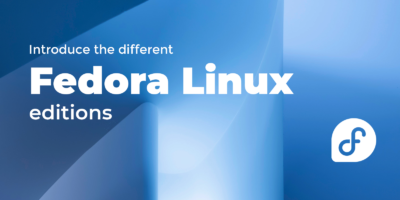
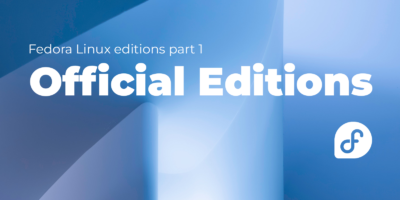
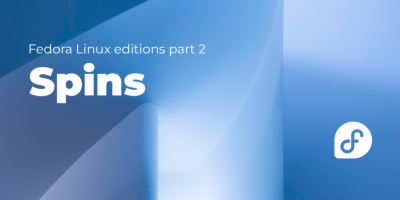
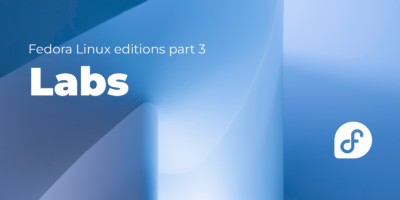
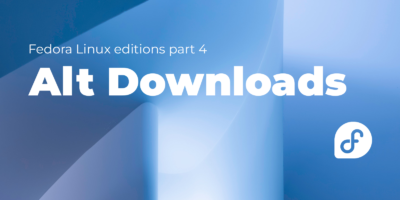

Cornel Panceac
‘ including ARM, AArch64, ‘
You meant ‘ARM AArch64’ (without the comma), right?
Also: ‘ including ARM, AArch64, Power, and s390x.’
What means ‘including’ ? Is there anything else beside ARM AArch64, Power and S390x ?
Gregory Bartholomew
Thanks for pointing out that typo Cornel. I’ve removed the extra comma.
There is RISC-V. But I don’t think it is officially supported yet.
Paul A. Gureghian
I think it might be ARM 32 bit
Gregory Bartholomew
According to the wiki page (https://fedoraproject.org/wiki/Changes/RetireARMv7) Fedora stopped supporting ARM 32 bit in June of 2023.
iqk2d0r6r5
Love the alternative downloads and have been using them as well as the spins for a long time.
Really wish there was one additional alternative download that just contained a minimal fedora install’s entire filesystem packaged as some kind of tar/tar.xz/etc archive, similar to what Arch does.
This would be great for the use-case of doing manual partition setup with cli-tools and then manually installing to said partitions. Haven’t tried the new web-based Anaconda yet but I know the old GTK-based one makes doing this sort of thing next to impossible and due to the way BLS entries are handled in Anaconda, things like Fedora + Fedora dual-boot are very difficult to do under Anaconda (there are tickets mentioning it).
Gregory Bartholomew
If you are formatting your drive manually from another Fedora OS, then
dnf ‐‐installroot=<target-partition-mountpoint> group install “Minimal Install”
dnf ‐‐installroot=<target-partition-mountpoint> install dnf5 kernel
should give you something close to what the Fedora Minimal image has.
If you want to be a little more exact, you could examine the following kickstart scripts that are used to generate the Fedora Minimal image.
https://pagure.io/fedora-kickstarts/blob/main/f/fedora-disk-base.ks
https://pagure.io/fedora-kickstarts/blob/main/f/fedora-minimal-common.ks
https://pagure.io/fedora-kickstarts/blob/main/f/fedora-disk-minimal.ks
iqk2d0r6r5
Thanks Gregory
Those are decent suggestions. I have tried the –installroot option before but if I recall correctly, I had run into some odd behavior with it on occasion (system not booting after install usually). Kickstart might be an option but had seemed a bit involved when I had attempted to decipher it in the past.
All the same, I still wish that the minimal install as a tar file existed as one of the alt download options as that would be far simpler than either the –installroot or kickstart approaches, usable from any live disc (not just fedora ones), and likely significantly faster since it would simply be unpacking a system. No clue where the proper place to propose such a thing would be but I assume it would be a moot point unless I had the time and know-how to build it and was willing to maintain it myself.
My current solution is to do a minimal install, then tar the filesystem myself. This works for reinstalls on the same pc but I haven’t tried it across hw builds (I suspect it would run into issues). Even this is a bit of a chore though so I don’t really bother with it every release, only when I have the time and energy to mess with different setups; even then I tend to reuse the one capture and then just do an in-place upgrade if I can get away with it.
Gregory Bartholomew
Yes, configuring the bootloader is a separate (and complex) step from downloading/unpacking the root filesystem. That would be true of a tar archive as well, which is probably why Fedora doesn’t normally distribute their OS that way. They are adding official support for sd-boot in the upcoming release, however, and that might simplify the steps required to create the “bootloader” partition enough that people could do installs from simple file archives as you suggest.